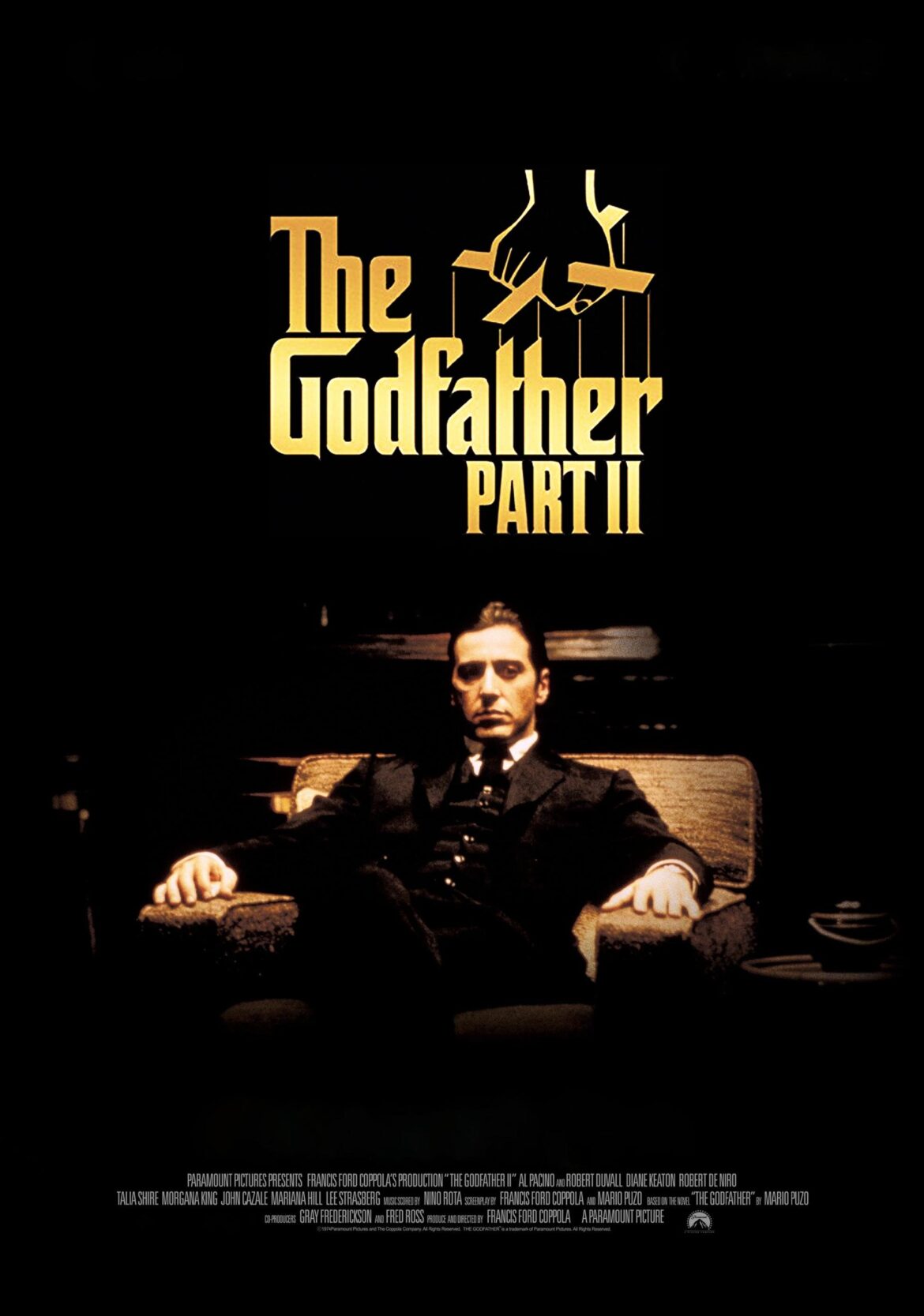The Godfather Part II (1974) – A Masterful Sequel that Deepens the Legacy of the Corleone Family
Type: Movie
Country: United States
Genre: Crime, Drama
Release Date: December 20, 1974
Duration: 200 minutes
Director: Francis Ford Coppola
Production Companies: Paramount Pictures, The Coppola Company
Cast: Al Pacino, Robert De Niro, Robert Duvall, Diane Keaton, John Cazale, Talia Shire, Lee Strasberg, Michael V. Gazzo
Quick Review:
“The Godfather Part II” (1974), directed by Francis Ford Coppola, is a masterful continuation of the Corleone saga, delving deeper into the complex world of organized crime. The film, with its dual narrative structure, brilliantly juxtaposes the rise of young Vito Corleone, portrayed by Robert De Niro, with the struggles of his son Michael Corleone, played by Al Pacino, as he consolidates his power. With its intricate storytelling, stellar performances, and profound themes, “The Godfather, Part II” is often hailed as one of the greatest sequels in cinematic history.
Plot Summary:
“The Godfather Part II” weaves two parallel stories that enrich the narrative of the Corleone family. The first storyline takes us back to the early 1900s, following the journey of young Vito Corleone from his native Sicily to New York City. Facing adversity and tragedy, Vito rises from a humble immigrant to a powerful and respected mafia boss, laying the foundation for the Corleone dynasty. Robert De Niro’s portrayal of Vito earned him an Academy Award, capturing the character’s evolution with remarkable depth.
The second narrative focuses on Michael Corleone in the late 1950s, who is now the head of the Corleone family. Struggling to protect his empire amidst growing external threats and internal betrayal, Michael’s journey is one of increasing isolation and moral decay. Al Pacino’s performance as Michael is compelling, showcasing the character’s transformation from a reluctant heir to a ruthless leader. The film explores Michael’s efforts to legitimize the family business while dealing with betrayal within his inner circle, particularly his older brother Fredo.
Characters and Performances:
- Al Pacino (Michael Corleone): Pacino’s portrayal of Michael Corleone is nothing short of iconic. He masterfully conveys Michael’s internal conflict, steely resolve, and gradual descent into moral ambiguity. Pacino’s nuanced performance anchors the film, making Michael’s journey both tragic and compelling.
- Robert De Niro (Vito Corleone): De Niro delivers a captivating performance as the young Vito Corleone, capturing the character’s intelligence, determination, and charisma. His portrayal complements Marlon Brando’s older Vito from the first film, adding layers to the character’s backstory.
- Robert Duvall (Tom Hagen): Duvall’s steady and reliable performance as the family’s consigliere provides a calm counterpoint to Michael’s escalating paranoia and violence. Hagen’s loyalty and quiet strength are key elements of the Corleone family’s dynamic.
- Diane Keaton (Kay Adams-Corleone): Keaton brings emotional depth to the role of Michael’s wife, Kay, whose disillusionment with the family’s criminal activities grows throughout the film. Her confrontation with Michael is one of the film’s most powerful moments.
- John Cazale (Fredo Corleone): Cazale’s portrayal of Fredo, the weak and conflicted older brother, is poignant and heartbreaking. Fredo’s betrayal and its consequences are central to the film’s emotional impact.
Direction and Cinematography:
Francis Ford Coppola’s direction in “The Godfather Part II” is masterful, blending the two timelines seamlessly to create a rich and complex narrative. Gordon Willis’s cinematography enhances the film’s dark and moody atmosphere, using lighting and composition to emphasize the themes of power and corruption. The meticulous attention to detail in the set design and costumes brings the era to life, immersing the audience in both the early 20th century and the 1950s.
Music:
Nino Rota’s haunting score, with its iconic themes, continues to play a vital role in “The Godfather Part II.” The music underscores the film’s emotional depth and complements the narrative’s shifting tones. Rota’s compositions, combined with Carmine Coppola’s additional music, enrich the film’s dramatic impact.
Why It Endures:
“The Godfather Part II” endures because of its intricate storytelling, powerful performances, and exploration of timeless themes such as power, loyalty, and family. The film’s dual narrative structure allows for a deeper understanding of the Corleone family’s legacy, contrasting the origins of their empire with its present-day challenges. Its critical acclaim and numerous awards, including six Academy Awards, solidify its status as a cinematic masterpiece.
In Conclusion:
“The Godfather Part II” (1974) is a landmark in film history, offering a profound and engrossing continuation of the Corleone saga. Directed by Francis Ford Coppola, the film’s exceptional performances, particularly by Al Pacino and Robert De Niro, and its masterful storytelling make it a compelling watch. The film’s exploration of power, corruption, and family loyalty resonates deeply, ensuring its place as one of the greatest films of all time.


